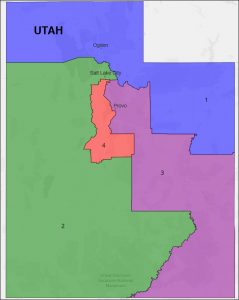By Jim Ellis
Dec. 21, 2021 — Nevada Congresswoman Dina Titus (D-Las Vegas) is drawing a great deal of recent media attention largely for the vulgar way in which she described the Democrats’ new Sliver State congressional redistricting map before a meeting of the Nevada AFL-CIO.She is upset because her once politically rock-solid downtown Las Vegas-anchored district is now in the competitive realm, and she believes the legislators not only did her a disservice, but endangered, from a Democratic partisan context, all of the Clark County districts.
At the labor meeting, Titus described what the state Democrats did by saying, as quoted in the Nevada Current online publication:
“… you read that the Republicans are using gerrymandering to cut out Democratic seats, but they didn’t have to in this state. We did it to ourselves.”
Nevada is one of the 15 Democrat trifecta states — which is where one party controls the governor’s office, the state Senate, and state Assembly — and therefore holds the redistricting pen. The number of places where they can actually gain congressional seats through the re-draw process, however, is only four: Illinois, New Mexico, New York, and Oregon, which is why it is critical for the Nevada Democrats to hold their three Silver State seats. Rep. Mark Amodei’s (R-Carson City) northern 2nd District, for geographic and political reasons, must remain safely Republican.
Rep. Titus, however, believes the final map puts all three of the state’s Democratic districts in jeopardy. Predicting what could be a difficult year for the party in Nevada, Rep. Titus apparently thinks Republicans could sweep the state’s four congressional seats in the 2022 election.
She further stated, again as the Nevada Current reported, that,
“Republicans are going to turn out, and they are excited. Democrats are kind of ‘meh, I have to pay more gas prices. Hispanics aren’t going to want to turn out if we don’t get something for immigration. I mean, why would they?”
Titus remembers the 2014 election cycle when Democratic turnout was so poor in a down year for her party that Republicans swept the ticket from top to bottom.




